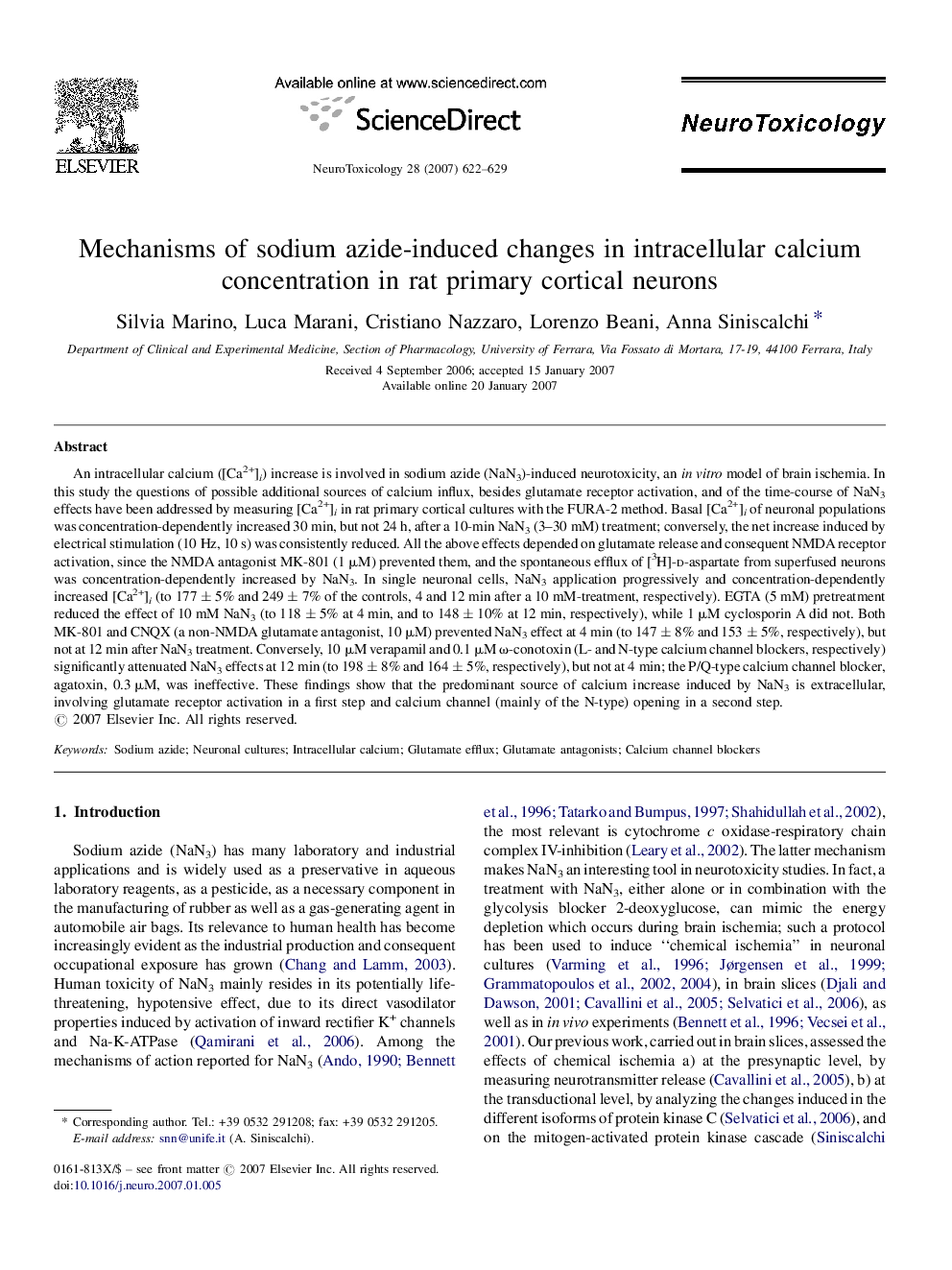| کد مقاله | کد نشریه | سال انتشار | مقاله انگلیسی | نسخه تمام متن |
|---|---|---|---|---|
| 2590161 | 1131727 | 2007 | 8 صفحه PDF | دانلود رایگان |

An intracellular calcium ([Ca2+]i) increase is involved in sodium azide (NaN3)-induced neurotoxicity, an in vitro model of brain ischemia. In this study the questions of possible additional sources of calcium influx, besides glutamate receptor activation, and of the time-course of NaN3 effects have been addressed by measuring [Ca2+]i in rat primary cortical cultures with the FURA-2 method. Basal [Ca2+]i of neuronal populations was concentration-dependently increased 30 min, but not 24 h, after a 10-min NaN3 (3–30 mM) treatment; conversely, the net increase induced by electrical stimulation (10 Hz, 10 s) was consistently reduced. All the above effects depended on glutamate release and consequent NMDA receptor activation, since the NMDA antagonist MK-801 (1 μM) prevented them, and the spontaneous efflux of [3H]-d-aspartate from superfused neurons was concentration-dependently increased by NaN3. In single neuronal cells, NaN3 application progressively and concentration-dependently increased [Ca2+]i (to 177 ± 5% and 249 ± 7% of the controls, 4 and 12 min after a 10 mM-treatment, respectively). EGTA (5 mM) pretreatment reduced the effect of 10 mM NaN3 (to 118 ± 5% at 4 min, and to 148 ± 10% at 12 min, respectively), while 1 μM cyclosporin A did not. Both MK-801 and CNQX (a non-NMDA glutamate antagonist, 10 μM) prevented NaN3 effect at 4 min (to 147 ± 8% and 153 ± 5%, respectively), but not at 12 min after NaN3 treatment. Conversely, 10 μM verapamil and 0.1 μM ω-conotoxin (L- and N-type calcium channel blockers, respectively) significantly attenuated NaN3 effects at 12 min (to 198 ± 8% and 164 ± 5%, respectively), but not at 4 min; the P/Q-type calcium channel blocker, agatoxin, 0.3 μM, was ineffective. These findings show that the predominant source of calcium increase induced by NaN3 is extracellular, involving glutamate receptor activation in a first step and calcium channel (mainly of the N-type) opening in a second step.
Journal: NeuroToxicology - Volume 28, Issue 3, May 2007, Pages 622–629